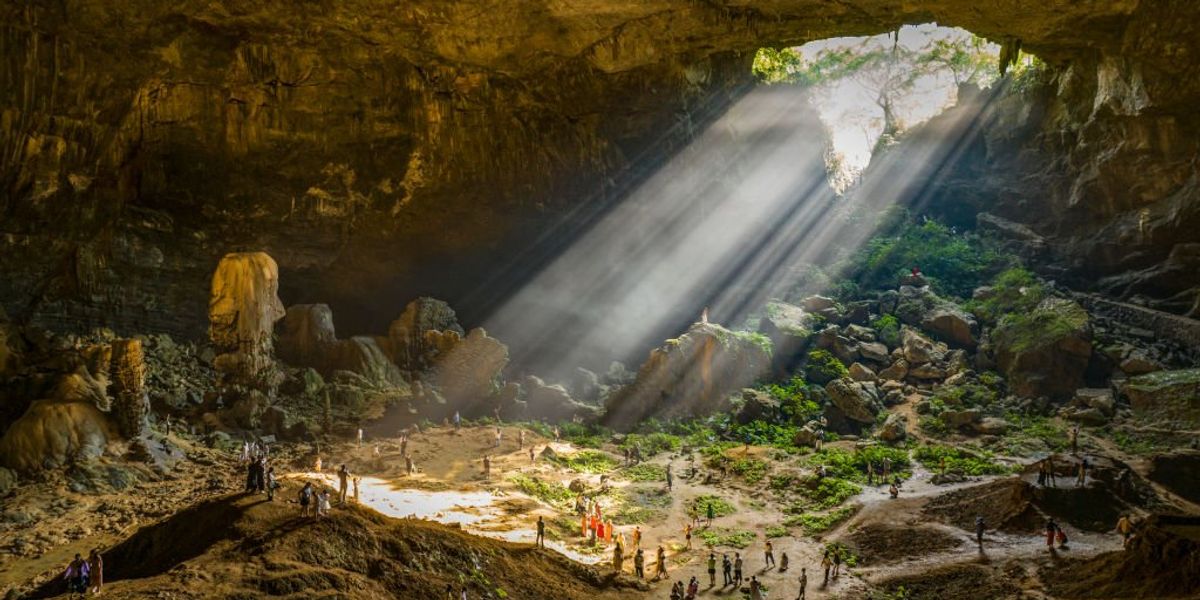Deep in the heart of China’s karst landscapes, scientists have discovered immense sinkholes that appear to contain ancient forests that are teeming with life, according to the Debrief.
These sinkholes are known as karst tiankengs — and they appear to be a hotbed of genetic diversity and home to endangered species like the Manglietia aromatica.
A recent study was published in the March issue of Forests, which appeared to provide evidence that these sinkholes have conserved long lost DNA.
In the introduction to the study, researchers stated: “China has the most extensive distribution of karst terrain globally, covering an area of 344 km2. The unique development process of karst landforms has resulted in the formation of distinctive landscapes, including peak clusters, peak forests, caves, and karst sinkholes.”
“Currently, there are approximately 300 known tiankengs worldwide, with over half of them located in China, earning it the title of the ‘world karst tiankeng kingdom’.”
Karst tiankengs are very large sinkholes that were formed by the dissolution of soluble rocks such as limestone. These rocks are pervasive throughout regions like Guangxi, China, per the report.
While these sinkholes could be considered natural wonders, they are also considered ecological hotspots, home to endangered species of plants.
In 2022, the UNESCO Courier reported that the Dashiwei “tiankeng is the largest of its kind and yet has only been known to the outside world since 1998. It is part of the Dashiwei Tiankeng Group, a rare geological wonder with 29 sinkholes distributed in an area of 20 square kilometers. The scene down there was stunning: an underground pristine forest with no trace of human activities, with 40 metre-high ancient trees and a group of endangered wild plants from the times of dinosaurs.”
While looking down into one of these colossal sinkholes, one is not simply greeted with stony rock but a lush forest teeming with life.
Tang Jianmin — an associate Researcher at Guangxi Institute of Botany — said: “The scene down there was stunning: an underground pristine forest with no trace of human activities, with 40 meter-high ancient trees and a group of endangered wild plants from the times of dinosaurs.”
The Debrief reported that the process begins when water acidified by carbon dioxide blends into the soil, slowing wearing away at the underlying limestone. Over a long period of time, the creation of these sinkholes ultimately leads to tiankengs, which is Mandarin for “heavenly pits.”
There are 300 tiankengs in the world today, but 200 of them are located in China.
Like Blaze News? Bypass the censors, sign up for our newsletters, and get stories like this direct to your inbox. Sign up here!
